Type of articles considered
IJAOS is a multidisciplinary journal and therefore research findings (papers), reviews, case reports, letters to the editor of general significance that are written clearly and well organized will be given preference. It invites papers under the following categories:
1. Research papers
2. Reviews/special articles*
3. Case reports
4. Letters to the Editor**
*Reviews and Special articles will be considered from senior scientists
**A letter can be a brief scientific communication
All accepted paper should be prepared according to the IJAOS MS word template.
Abstract & Keywords:
The abstract should be between 100-200 words. It should be written in a single paragraph, and should not contain references or mathematical notations. The number of the keywords should be at most 6.
Length of the paper and margins:
The maximum length of a paper is limited to 10000 words. Write your paper in size of A4, set the margins (top, bottom, right, and left) to 2.54 cm.
Note that violating the length limitation of a paper will result in rejection.
Font Specification and Spacing:
The main text of the paper should be written using Times New Roman font with 12-point font size. The paper should be double line spaced. Use 11 point Times New Roman for "Abstract" and “Keywords” and also use 16-point Times New Roman for the title of the paper.
Paragraph Format:
All the paragraphs should be indented by 0.75 cm expect the first paragraph of each section.
Main Structure:
The paper main structure consists of the items described below:
- Subdivision - numbered sections: Divide your manuscript into clearly defined and numbered sections. Subsections must be numbered 1.1 (then 1.1.1, 1.1.2 ...), 1.2, etc. Use font 12-point Bold Times New Roman for the main sections, 11-point Bold Times New Roman for the first subsections, 10-point Bold Times New Roman for the second subsections, and so forth.
- Introduction: State the main problem, necessity, objectives, and novelties of the work and provide a sufficient literature review.
- Material and methods: Present adequate details to allow the work to be reproduced by an independent researcher.
- Results and Discussion: Results should be precise, clear, and concise. Note that avoiding discussion of previously published works.
- Conclusion: The main conclusions of the study are presented in this section. It is very important that you indicate clearly what you have done and explain the differences existed between your work and previously published works. Outlook is an essential part of a paper. The authors should pay attention to mention it reasonably.
Mathematical notations and equations:
All the mathematical notations should be italicized. It would be better to consider a separate sub-section or an appendix in order to describe all these notations (i.e. sets, indices, parameters, and variables) before the mathematical model presentation.
All the equations which are explicitly referenced in the text should be numbered. The equations can be entered using MathType or Equation option available in the Symbols group on the Insert tab in Microsoft Word.
Use the format below for equations.
|
Eqn. (1) |
Use in the text |
|
(1) |
Use to number the equation |
Figures and Tables:
All the figures and tables should be placed in center within the text. They should be numbered sequentially, but separately. As a key point, they should be explicitly referenced in the text and should not be placed before they are referenced. The caption of tables should be above them and the caption of figures should be below it. Use 10-point Times New Roman for the captions and contents of the tables and figures.
Use the format below for tables, figures.
|
Figure 1 |
Use in the text |
Table 1 |
Use in the text |
|
Fig. 1 |
Use in the caption |
Use in the caption |
Conclusions and Future Work:
It is very important that you indicate clearly what you have done and explain the differences existed between your work and previously published works. Outlook is an essential part of a paper. The authors should pay attention to mention it reasonably.
Acknowledgment:
The authors should prepare the acknowledgments section, if needed, after the conclusion section, but before any appendices and references. The acknowledgment section heading is not numbered.
Appendix:
If there are any appendices, place them before the reference section and label them with A, B, C, and so forth.
References:
All references cited should consist of published works accessible to the public. They should be cited in APA format and the Times New Roman font using 11-point font size. Place the list of references after the appendices. The heading of reference section should not be numbered. Arrange the references by observing alphabetical order.
Check the formats presented below for referring to “Technical report”, “Conference papers”, “Journal papers”, “Books” and “Websites" within the main text.
To cite a reference within the text, use "Number" method with square brackets [ ]. For example, a work done by Yang, Mathur, and Ballou in 2000 would be cited Yang et al. [1].
References to books should include the author’s name; year of publication; title; page numbers where appropriate; publisher; place of publication. For example:
- Conference: Wang, Z., & Liu, Y. (2006). A multi-agent agile scheduling system for job-shop problem. Sixth International Conference on Intelligent Systems Design and Applications, ISDA'06, 2, 679-683.
- Jouranl paper: Ghiani, G., and Improta, G. (2000). An efficient transformation of the generalized vehicle routing problem. European Journal of Operational Research, 122(3), 11-17.
- Book: Glover, F., & Laguna, M. (1998). Tabu search. In Handbook of combinatorial optimization, Springer, Boston, MA, 2093-2229.
- Thesis: Webster, B. L. (2004). Solving Combinatorial Optimization Problems Using a New Algorithm Based on Gravitational Attraction. Ph.D., thesis, Melbourne, Florida Institute of Technology, 1-250.
Plagiarism
Plagiarism is copying another person’s text or ideas and passing the copied material as your own work. Plagiarism is considered fraud and has potentially harsh consequences. The IJAOS will judge any case of plagiarism on its own merits. If plagiarism is detected, either by the editors, reviewers at any stage before publication of a manuscript- before or after acceptance, we will ask the author(s), to rewrite the text. If at least 20% of the original submission is plagiarized the article may be rejected.
Notice:
The authors can't change or revise their information including name, affiliation, email address, etc. after publishing their paper.
Copyright Policy:
The publication stage will begin when the acceptance letter is sent to the authors. They should sign the agreement form. As a result, the authors assign the copyright to the International Journal of Applied Optimization Studies (IJAOS).



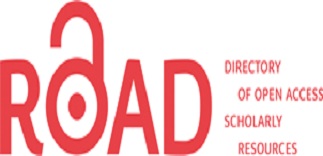
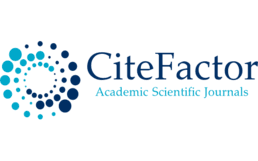
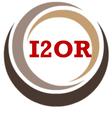
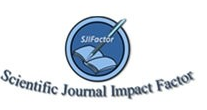
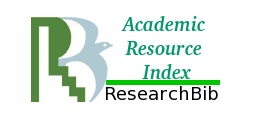



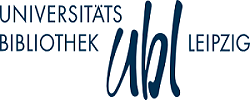

 Telegram
Telegram  Twitter
Twitter Facebook
Facebook  Google Plus
Google Plus  Email
Email  Linkedin
Linkedin 